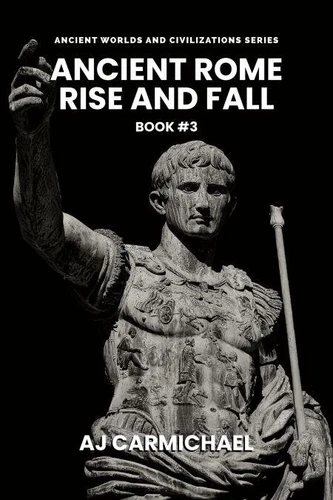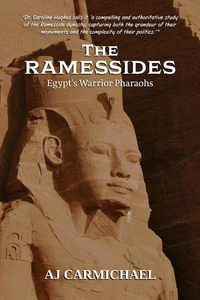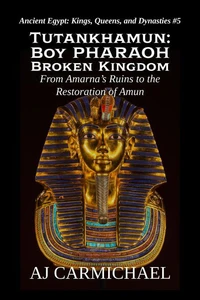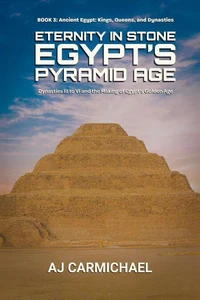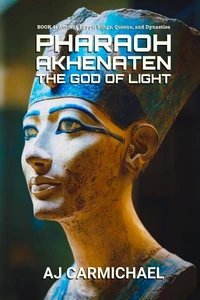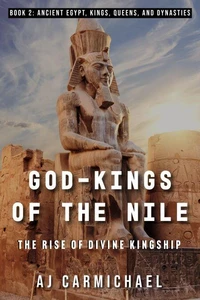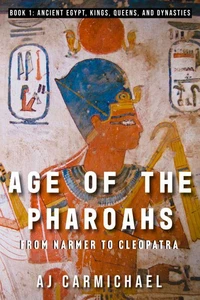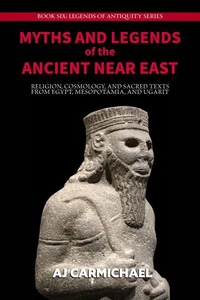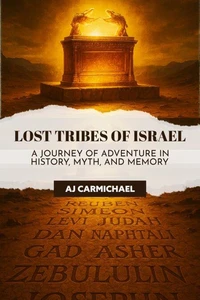Ancient Rome, Rise and Fall. Ancient Worlds and Civilizations, #3
Par :Formats :
Disponible dans votre compte client Decitre ou Furet du Nord dès validation de votre commande. Le format ePub est :
- Compatible avec une lecture sur My Vivlio (smartphone, tablette, ordinateur)
- Compatible avec une lecture sur liseuses Vivlio
- Pour les liseuses autres que Vivlio, vous devez utiliser le logiciel Adobe Digital Edition. Non compatible avec la lecture sur les liseuses Kindle, Remarkable et Sony
 , qui est-ce ?
, qui est-ce ?Notre partenaire de plateforme de lecture numérique où vous retrouverez l'ensemble de vos ebooks gratuitement
Pour en savoir plus sur nos ebooks, consultez notre aide en ligne ici
- FormatePub
- ISBN8215811405
- EAN9798215811405
- Date de parution30/11/2022
- Protection num.pas de protection
- Infos supplémentairesepub
- ÉditeurWMG Publishing
Résumé
The Roman Empire was one of the most powerful empires in history. Its reach extended throughout Europe, into Africa, and as far as Asia. But how did Romans become such a dominant force? And what made them different from other civilizations in their day? In this book, we'll look at some of the critical moments that shaped Rome into what it was when it finally fell: how they rose to power and stayed there for so long.
The Roman Empire began in the eighth century B. C. when a group of people known as Latins formed settlements and eventually turned into a city called Rome. The city was ruled by two kings, elected by the Senate (essentially a group of powerful men). The Romans conquered other peoples and became an empire that stretched from Spain to Turkey. Their armies were so strong that they could take on several enemies at once-and win!The Roman Empire was the most powerful political entity in Western Europe, and its rise to power has been attributed to several factors:Rome's location at the center of several major trade routes allowed it to expand economically and socially.
Romans were farming people who valued labor over leisure and were able to build substantial wealth through agriculture and trade. When Rome overthrew their kings in 509 BC, they established a republic with two consuls (a type of official) who held equal power. The consuls had authority over military matters and foreign policy; they also led religious rituals related to warfare, such as sacrifices before battle or upon returning home victorious from war.
Finally, this combination of factors led Romans into conflict with neighboring territories-invading other lands led by conquest or threat of force until surrounding peoples became vassals under their rule.
The Roman Empire began in the eighth century B. C. when a group of people known as Latins formed settlements and eventually turned into a city called Rome. The city was ruled by two kings, elected by the Senate (essentially a group of powerful men). The Romans conquered other peoples and became an empire that stretched from Spain to Turkey. Their armies were so strong that they could take on several enemies at once-and win!The Roman Empire was the most powerful political entity in Western Europe, and its rise to power has been attributed to several factors:Rome's location at the center of several major trade routes allowed it to expand economically and socially.
Romans were farming people who valued labor over leisure and were able to build substantial wealth through agriculture and trade. When Rome overthrew their kings in 509 BC, they established a republic with two consuls (a type of official) who held equal power. The consuls had authority over military matters and foreign policy; they also led religious rituals related to warfare, such as sacrifices before battle or upon returning home victorious from war.
Finally, this combination of factors led Romans into conflict with neighboring territories-invading other lands led by conquest or threat of force until surrounding peoples became vassals under their rule.
The Roman Empire was one of the most powerful empires in history. Its reach extended throughout Europe, into Africa, and as far as Asia. But how did Romans become such a dominant force? And what made them different from other civilizations in their day? In this book, we'll look at some of the critical moments that shaped Rome into what it was when it finally fell: how they rose to power and stayed there for so long.
The Roman Empire began in the eighth century B. C. when a group of people known as Latins formed settlements and eventually turned into a city called Rome. The city was ruled by two kings, elected by the Senate (essentially a group of powerful men). The Romans conquered other peoples and became an empire that stretched from Spain to Turkey. Their armies were so strong that they could take on several enemies at once-and win!The Roman Empire was the most powerful political entity in Western Europe, and its rise to power has been attributed to several factors:Rome's location at the center of several major trade routes allowed it to expand economically and socially.
Romans were farming people who valued labor over leisure and were able to build substantial wealth through agriculture and trade. When Rome overthrew their kings in 509 BC, they established a republic with two consuls (a type of official) who held equal power. The consuls had authority over military matters and foreign policy; they also led religious rituals related to warfare, such as sacrifices before battle or upon returning home victorious from war.
Finally, this combination of factors led Romans into conflict with neighboring territories-invading other lands led by conquest or threat of force until surrounding peoples became vassals under their rule.
The Roman Empire began in the eighth century B. C. when a group of people known as Latins formed settlements and eventually turned into a city called Rome. The city was ruled by two kings, elected by the Senate (essentially a group of powerful men). The Romans conquered other peoples and became an empire that stretched from Spain to Turkey. Their armies were so strong that they could take on several enemies at once-and win!The Roman Empire was the most powerful political entity in Western Europe, and its rise to power has been attributed to several factors:Rome's location at the center of several major trade routes allowed it to expand economically and socially.
Romans were farming people who valued labor over leisure and were able to build substantial wealth through agriculture and trade. When Rome overthrew their kings in 509 BC, they established a republic with two consuls (a type of official) who held equal power. The consuls had authority over military matters and foreign policy; they also led religious rituals related to warfare, such as sacrifices before battle or upon returning home victorious from war.
Finally, this combination of factors led Romans into conflict with neighboring territories-invading other lands led by conquest or threat of force until surrounding peoples became vassals under their rule.

